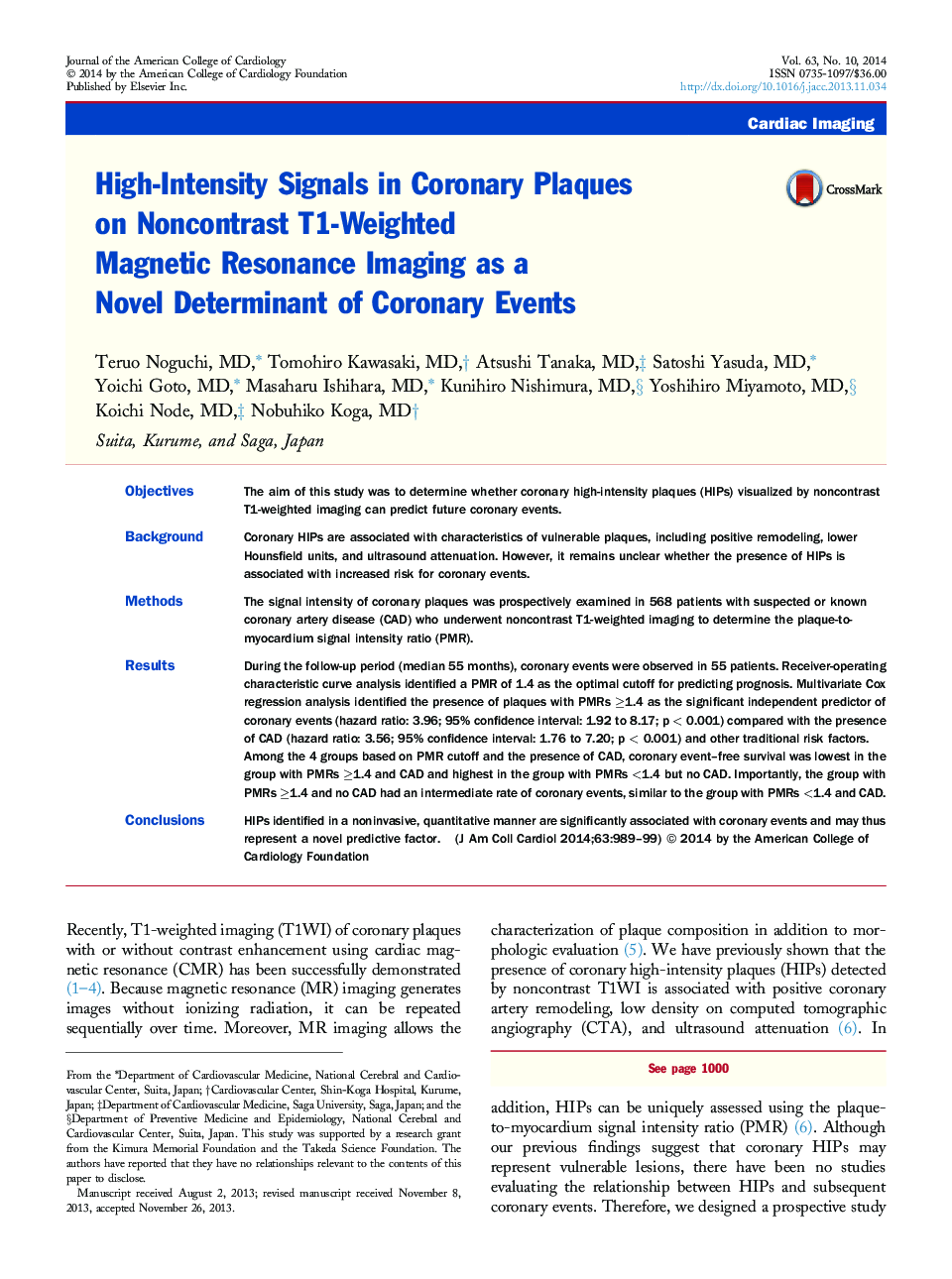| Article ID | Journal | Published Year | Pages | File Type |
|---|---|---|---|---|
| 2945435 | Journal of the American College of Cardiology | 2014 | 11 Pages |
ObjectivesThe aim of this study was to determine whether coronary high-intensity plaques (HIPs) visualized by noncontrast T1-weighted imaging can predict future coronary events.BackgroundCoronary HIPs are associated with characteristics of vulnerable plaques, including positive remodeling, lower Hounsfield units, and ultrasound attenuation. However, it remains unclear whether the presence of HIPs is associated with increased risk for coronary events.MethodsThe signal intensity of coronary plaques was prospectively examined in 568 patients with suspected or known coronary artery disease (CAD) who underwent noncontrast T1-weighted imaging to determine the plaque-to-myocardium signal intensity ratio (PMR).ResultsDuring the follow-up period (median 55 months), coronary events were observed in 55 patients. Receiver-operating characteristic curve analysis identified a PMR of 1.4 as the optimal cutoff for predicting prognosis. Multivariate Cox regression analysis identified the presence of plaques with PMRs ≥1.4 as the significant independent predictor of coronary events (hazard ratio: 3.96; 95% confidence interval: 1.92 to 8.17; p < 0.001) compared with the presence of CAD (hazard ratio: 3.56; 95% confidence interval: 1.76 to 7.20; p < 0.001) and other traditional risk factors. Among the 4 groups based on PMR cutoff and the presence of CAD, coronary event–free survival was lowest in the group with PMRs ≥1.4 and CAD and highest in the group with PMRs <1.4 but no CAD. Importantly, the group with PMRs ≥1.4 and no CAD had an intermediate rate of coronary events, similar to the group with PMRs <1.4 and CAD.ConclusionsHIPs identified in a noninvasive, quantitative manner are significantly associated with coronary events and may thus represent a novel predictive factor.
